ALSO BY ALOIS PODHAJSKY
MY DANCING WHITE HORSES
THE WHITE STALLIONS OF VIENNA
Drawings by Anton Haug
PHOTOGRAPHIC CREDITS
Fritz Kern, Vienna: #s 11, 15, 17, 18, 32
Werner Menzendorf, Berlin: #s 3, 4, 5, 6, 7, 10, 12, 21, 22, 23, 27, 31, 33, 34, 35, 37, 38
Bruno Kerschner, Salzburg: #s 16, 19, 25, 26, 30, 36
Published originally under the title DIE KLASSISCHE REITKUNST
Eine Reitlehre von den Anfngen bis zur Vollendung
by Nymphenburger Verlagshandlung GmbH., Mnchen.
Copyright 1965 by Nymphenburger Verlagshandlung GmbH., Mnchen.
LIBRARY OF CONGRESS CATALOG CARD NUMBER 6711157
ENGLISH TRANSLATION COPYRIGHT 1967 BY DOUBLEDAY & COMPANY , INC .
ALL RIGHTS RESERVED
eISBN: 978-0-307-83054-8
v3.1
This is to express my deep gratitude
to my friend Colonel V. D. S. Williams,
who is responsible for the development of dressage in England
and without whose invaluable help
this book could not have been translated.

Soestdijk Palace, April 1966.
It is with great pleasure that I have read the manuscript of this book about the training of horse and rider, based on the principles of the Spanish Riding School.
I think that every rider who trains his own horse and wants to achieve success in dressage, will read this book with as much enthusiasm as I did. There is a great deal to be learned from it and there is every reason to be very grateful to Colonel Podhajsky for passing on his knowledge and experience.

The Prince of the Netherlands.
CONTENTS
LIST OF PHOTOGRAPHS
BETWEEN PAGES 48 AND 49
Head rider Max Ritter von Weyrother, after an engraving by Perger 1815
Longeing of a young stallion, after an engraving by Ridinger
Young horse at the walk
Trot in the first phase of training
Young horse at the canter
BETWEEN PAGES 72 AND 73
Young horse on the longe
Correct position of a school horse on the left rein
Extended trot
Shoulder-in
BETWEEN PAGES 96 AND 97
Collected canter
Half pass to the right
Pirouette to the left
Halt
BETWEEN PAGES 120 AND 121
Passage
Extended trot
Piaffe
Piaffe
BETWEEN PAGES 168 AND 169
Passage
All four reins in one hand, riding on the curb only
Piaffe in hand
Levade in hand
BETWEEN PAGES 192 AND 193
Ballotade in hand
Capriole in hand
Courbette in hand
Curb bridle with rein on the cavesson; after an engraving by Ridinger
BETWEEN PAGES 216 AND 217
Riding on the curb only, after an engraving by Ridinger
Double bridle
Double bridle used at the Spanish Riding School
English saddle and school saddle used at the Spanish Riding School today
Piaffe between the pillars
Levade between the pillars
BETWEEN PAGES 240 AND 241
Levade
Capriole
Courbette
Quadrille
CHAPTER I
REVIEW AND PRINCIPLES OF RIDING
1. Historical Review
In ancient days the art of riding was developed to a high degree, as may be seen from the book of the Greek statesman and general, Xenophon, written in 400 B . C . Even before him Simon of Athens had written a thorough and detailed book about the art of riding which Xenophon mentions repeatedly. Unfortunately, this book by Simon has been lost, as has one by Plinius, which was also mentioned by Xenophon.
Any horse expert who has studied this book of Xenophons written 2400 years ago cannot fail to be impressed by the preciseness of his explanations and by his insight into the feelings of the horse. His training was based on intuition and kind treatment, a policy that, unfortunately, was not always followed by riding masters in later years. This attitude of kindness is best expressed by his own words: Anything forced and misunderstood can never be beautiful. And to quote the words of Simon: If a dancer was forced to dance by whip and spikes, he would be no more beautiful than a horse trained under similar conditions.
With the fall of the Greek empire and, later, with the great migration, the cultural value of many arts was lost. That of riding declined more and more and finally ceased to exist. To Xenophons book must be given the credit for preserving the ideas of equestrian art to the present day, because it was this book that formed the basis of its renaissance.
Nearly 2000 years later, in the sixteenth century, the long forgotten art of riding, together with other artistic accomplishments, came to light again. As the great masters of painting and sculpture began to flourish under the Italian sun, so the newly awakened art of riding was reintroduced by the Neapolitan nobleman Grisone, who was known to his contemporaries as the father of the art of equitation.
Grisone had thoroughly studied Xenophons book. He quotes, almost word for word, the instruction about the riders seat and aids. His idea, however, was to control the horse by force, as is proved by the numerous severe bits he invented.
The best known of Grisones many pupils was Pignatelli. He was the director of the famous Riding Academy at Naples to which Pluvinel came as a student from France. Pluvinel, who later became riding master to Louis XIII, followed the instructions of Pignatelli, but added to them from his own experience. Unlike his teacher and predecessor, he advocated individual treatment for the horse and substituted humane principles for the force in current use. His ideas were circulated in his book Mange du Roi, which appeared in 1623. This book was ridiculed to begin with, but in course of time Pluvinels principles were accepted and he prepared the path for Franois Robichon de la Gurinire, who later became the greatest riding master of France.
As a result of this development of humaneness, the doctrines of the Duke of Newcastle, published in his elaborate book in 1657, failed to create a durable basis for the art of riding in England, partly because of the cruelty of his methods. For the same reason Georg Engelhart von Lhneysens book, published in 1588, also failed to get a following.
The influence built up by Grisone, Pignatelli, and their pupils was soon lost. In the beginning of the eighteenth century the art of riding was almost exclusively influenced by France. And it was the great riding master de la Gurinire who produced the most revolutionary book on riding of all times. Unlike the writings of his predecessors, his book is clear and easy to understand. He based it on simplicity and facts in order to be completely understood by his readers. There is no need to discuss Gurinires teachings in detail in this work, not because they are not sufficiently interesting, but because they are applied unaltered at the Spanish Riding School and may be seen there in daily use.
With the French Revolution the doctrines of Gurinire were lost to France. Moreover, the Napoleonic wars brought to an end the riding academies of the various courts of Europe. Only the Spanish Riding School in Vienna faithfully preserved up to the present day the methods of Gurinire. This was due chiefly to the influence of Max Ritter von Weyrother, an outstanding horseman who was head rider at the School during the early part of the nineteenth century. His influence, which spread far beyond the confines of his country, was particularly felt in Germany, where Seidler, and even more so, Seeger and Oeynhausen were his disciples. They were powerful enough to withstand the teachings of Baucher and to establish their methods so firmly that, later, Plinzner and Fillis could not influence the riding in this country. Steinbrechts book, published in 1885, was also based on their teaching.


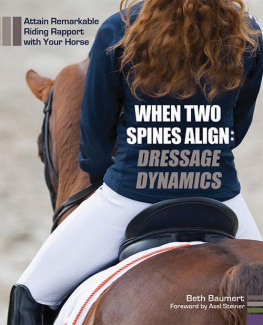
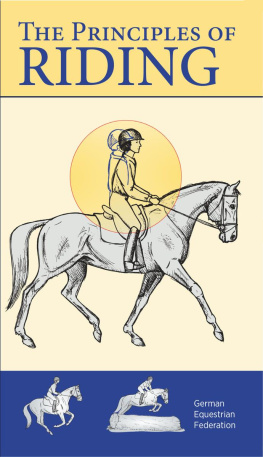
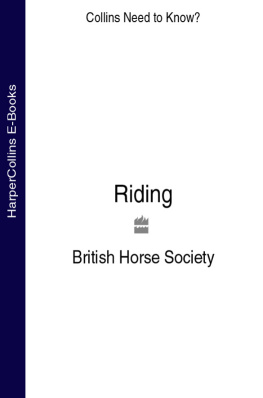
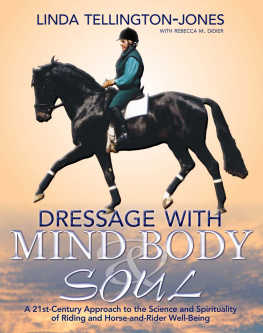

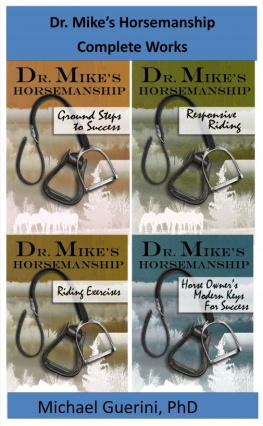

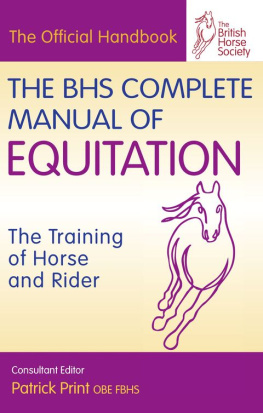
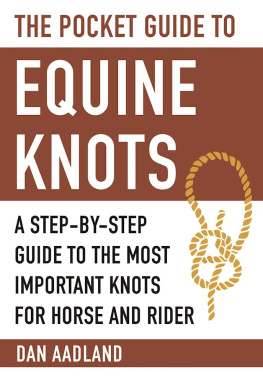
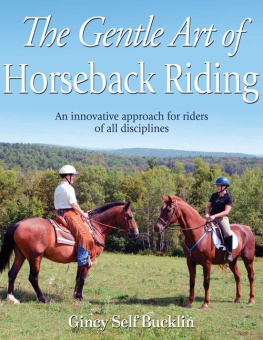
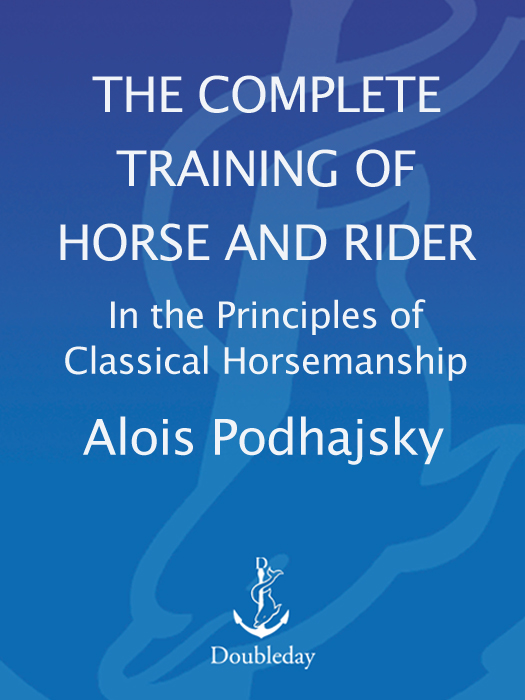
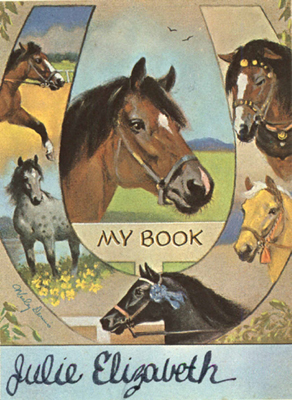

 Soestdijk Palace, April 1966.
Soestdijk Palace, April 1966.